Guest Recipe & Story: Pan de Muerto
from Selene Tepatzi and Brian Lance, of Atticus Bakery
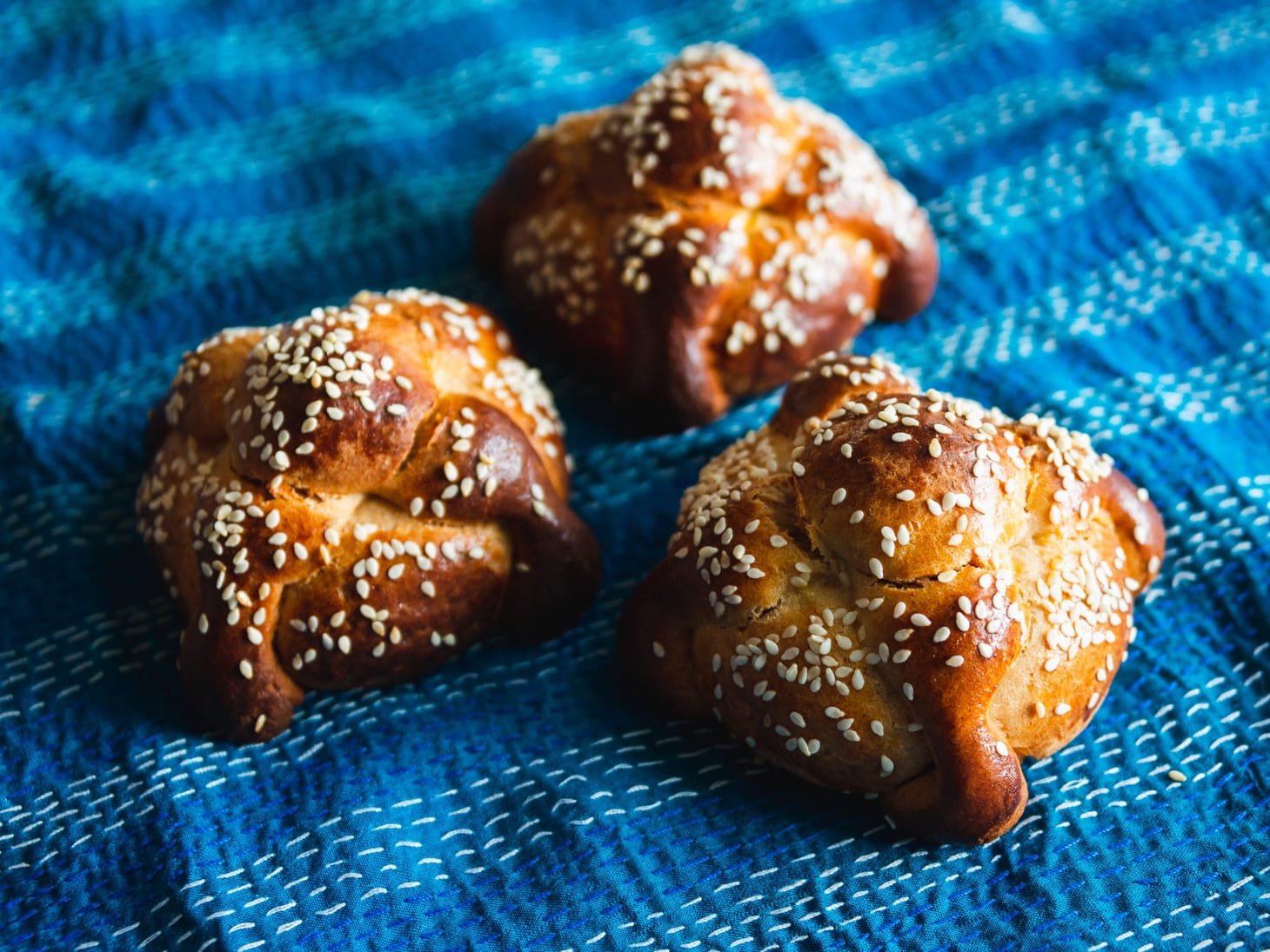
Table of Contents
I can’t tell you how excited I am to share today’s email with you all. It’s mid-October, which means that Halloween and the Day of the Dead are just a few weeks away. Which also means it is pan de muerto season, for Mexicans and all the rest of us who love this bone-studded sweet bread.
Most pan de muerto is based upon a pan dulce—the sweet, soft enriched bread similar to brioche. The recipe I have to share with you today is a very different version, a traditional one from the tiny Mexican state of Tlaxcala. It contains guava paste and cinnamon and is topped with sesame seeds rather than the classic coat of melted butter and granulated sugar. It eats closer to yeasted spice cake than a soft roll, and it is absolutely delicious. (It’s perfect alongside a cafe con leche.)

The recipe comes from Selene Tepatzi, the pastry chef of Atticus Bakery, in New Haven, CT, where they have been selling the popular breads for the past two seasons. And the story behind her Tlaxcalan family’s bread is told by Brian Lance, Atticus’ manager. (Brian is not only a wonderful baker himself, he’s also an accomplished writer and journalist. His essay Warplay, which you can read online here, was nominated for a Pushcart Prize several years ago.)
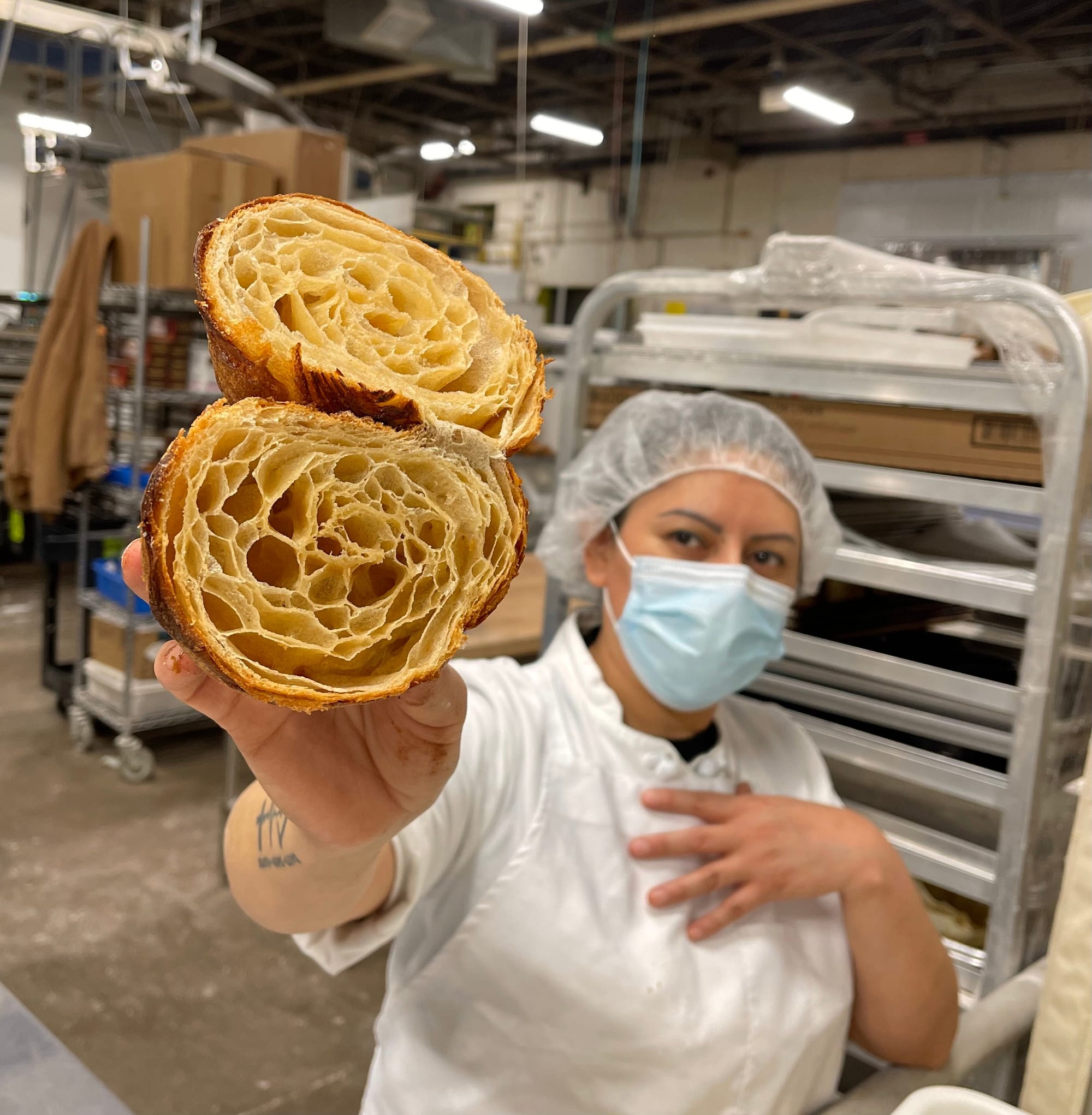
I’ll let Brian and Selene take it from here. Thank you both for sharing this bread with us all!
—Andrew
More than Bread with Bones: Pan de Muerto as a symbol of community and baking tradition in Tlaxcala
Recipe by Selene Tepatzi, Pastry Chef, Atticus Bakery
Words by Brian Lance, Manager, Atticus Bakery
Tlaxcala, Mexico’s smallest state, sits within the Sierra Madre Oriental under the watchful gaze of La Milinche volcano. The mountains and the rugged plateaus that surround them create climate extremes. The lower elevations are arid and studded with prickly pear and agave. While the mountains stay wet, cool, and see frost in the winter.
Alfonso Serrano farmed this land. He grew milpa, beans, and wheat in its volcanic soil, tilling his fields with horse and plow. He built an earthen oven and became the community baker in a time and place where that concept was not a romantic return to the old ways but a necessity.
Alfonso was the grandfather of Selene Tepatzi, the pastry chef at Atticus Bakery in New Haven, CT. He taught Selene how to bake. For Dio de los Muertos (Day of the Dead), Selene and Alfonso would hand-mix the rich dough for their family’s Pan de Muerto (more commonly called hojaldra). They would shape the loaves with their characteristic crossed bones and head, proof them on long wooden peels made from framing studs, and load them into Alfono’s earthen oven. Once the loaves were on the deck, Selene and Alfonso would seal the oven with a large stone and wait.
The people of San Jerónimo Zacualpan, Selene’s hometown, would bring their hojaldra dough to Alfonso. He and Selene would load and unload that earthen oven. Selene got her introduction to production baking that way, work she would continue for some 20 years after coming to America as a teenager.
Selene and the Atticus bakery team take hojaldra seriously. Siempre hecho con mucho amor, as we often say at the bakery. The bread has grown popular in American baking culture, now nearly synonymous with Autumn, appearing on many Instagram feeds alongside American baked staples, all things apple and pumpkin. But the bread is more than a trend for Selene and the team. Hojaldra season brings Selene back to her time at the earthen oven with her grandfather in Tlaxcala.
This will be our second year celebrating Dia de los Muertos at Atticus Bakery. In doing so, we pay tribute to our Latinx team members at the bakery, our two retail locations, and our sister company, Chabaso Bakery. Like last year, we will bake roll-size hojaldra, which will sell out within a couple hours of hitting the Atticus shelves.
We will also give larger loaves to the 100-plus employees at Chabaso. Most of those employees are Mexican, and most come from Tlaxcala. It adds a lot to the production schedule. But it’s a gesture that helps the people remember their childhood homes and families on a holiday commemorating ancestors. The gratitude justifies the effort.
About the Formula
The Atticus hojaldra recipe comes from Alfonso. And some of you might be wondering if we naturally leavened it. We could have done that. We have the knowledge and skills to make those adjustments at the bakery. Why didn’t we? Well, rather than follow current baking trends, and since Day of the Dead is a holiday honoring ancestors, we stuck to Selene’s grandfather’s recipe, as to preserve the baking heritage he left behind.
The recipe calls for guava puree, which I felt might be too pricey and too hard to source for production. We tested orange zest, orange juice, orange syrup, candied oranges, etc. All the while Selene insisted we use guava. She won—as usual. I ordered the guava.
Guava makes the difference in this dough, separates it from the ones you often see on Instagram. It lends a pinkish hue that stands out from the other versions we made. You can also taste the guava, a fruity backdrop to all the butter and eggs. Top with sesame seeds to balance the flavors with a toasty bottom note.
For flour, we used a sifted hard red spring wheat (Glenn) from Maine Grains, our primary flour at the bakery. But you can easily substitute an all purpose or bread flour that has a protein content of 11-13%, though you might have to adjust the hydration, which comes entirely from the guava and enrichments. The sifted wheat worked very well. And by using a regional, fresh-milled flour, we deepened the connection to Selene’s grandfather, who was a grain farmer, after all.
Pan De Muerto (Hojaldra)
Yield: 10 roll-size loaves
Notes:
This is the Maine Grains sifted wheat flour that Atticus uses here; other freshly-milled sifted bread (11-13% protein) flours should work. (I used Ground Up bread flour myself.)
If using King Arthur all-purpose flour, reduce the weight of the eggs by 20g (save the remainder for the egg wash).
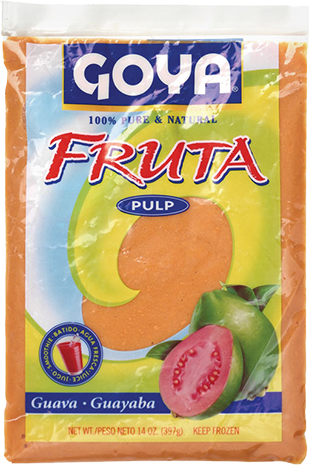
Guava purée (or pulp) is 100% guava, with no sugar added. It is available in the frozen section of some larger grocery stores, and in Hispanic/tropical markets (I found mine in a Brazilian market).
Selene’s recipe is unusual in that it does not include salt. I recommend making it as written, but if you’d prefer a small amount of salt, add 12g (1.8%).
This is closer to a yeasted cake than a bread—it is dense and buttery on purpose. Don’t work to hard to develop gluten during mixing or expect it to rise substantially during the proof. A slight puffiness is all you should look for.
Be sure to bake the rolls when slightly underproofed to help preserve the definition of the bones and head.
If your oven has a convection fan, use it here, as it will help with even browning.
If you have a very efficient oven, you should be able to bake both trays of rolls on the upper- and lower-middle racks, rotating from top to bottom and back to front at the halfway point.
Bake these on the darker side, since it will help ensure the interior is fully cooked.
These breads are best served within 24 hours of baking. (As Brian says, they never last more than a few hours at Atticus.)
Overall Formula
100% sifted wheat flour
35% sugar
4% instant (or 10% fresh) yeast
1% baking powder
0.5% ground cinnamon
30% whole eggs
20% guava puree
30% melted butter
Final Formula
700g sifted wheat flour (or substitute as mentioned above)
245g sugar
28g instant (or 70g fresh) yeast
7g (1 ½ teaspoons) baking powder
4g (1 ½ teaspoons) ground cinnamon
210g (4 large) eggs, room temperature
140g guava purée, thawed
210g (15 tablespoons) unsalted butter, melted
1 large egg, beaten with a pinch of salt and 1 teaspoon water, for the egg wash
2 tablespoons sesame seeds
- In a stand mixer fitted with a dough hook, mix the dry ingredients, including the yeast.
- Add the melted butter and mix on low speed until incorporated.
- Add the eggs slowly and mix again on low speed until it forms a cohesive but underdeveloped dough.
- Add the guava puree and mix on medium speed until the dough is smooth and loosely developed, 6 to 8 minutes. The dough should be delicate with no elasticity.
- Desired dough temperature: 75˚F.
- Cover and let proof for until puffy, 60 to 90 minutes.
- Transfer dough to a lightly-floured counter. Divide it into 10 pieces of 100g, 20 pieces of 18g for the bones, and 10 pieces of 8g for the heads.
- Line two baking sheets with parchment paper. Working on a lightly-floured counter, form the 100g pieces into smooth balls and transfer to the baking sheets, 5 per sheet. Roll each 18g piece into a 3-inch smooth log. Spread the 3 middle fingers of one hand widely, then roll them gently over the log to form it into a four-lobed “bone shape” (see below for images). Gently press the bone over one ball of dough crosswise, tuck the end lobes under the ball, and pinch the spaces between the lobes to define the bone shape. Repeat with a second 18g ball of dough, crossing the second bone perpendicularly over the first. Roll one 8g ball of dough into a smooth ball, and press gently but firmly into the intersection of the two bones. Repeat with the remaining balls of dough.
- Set an oven rack to the upper-middle position and heat the oven to 325 degrees. Cover rolls loosely and proof for about 30 minutes, or until slightly puffy. (Be sure to bake the dough when slightly underproofed to help preserve the definition of the bones and head.)
- Brush 1 tray of rolls with egg wash and sprinkle liberally with sesame seeds. Transfer to oven and bake (with convection if available) until a deep golden brown, about 30 minutes (about 24 minutes if using the convection fan), rotating the pan from back to front at the midway point. Transfer rolls to rack and allow to cool slightly before serving. Repeat topping and baking second pan of rolls.
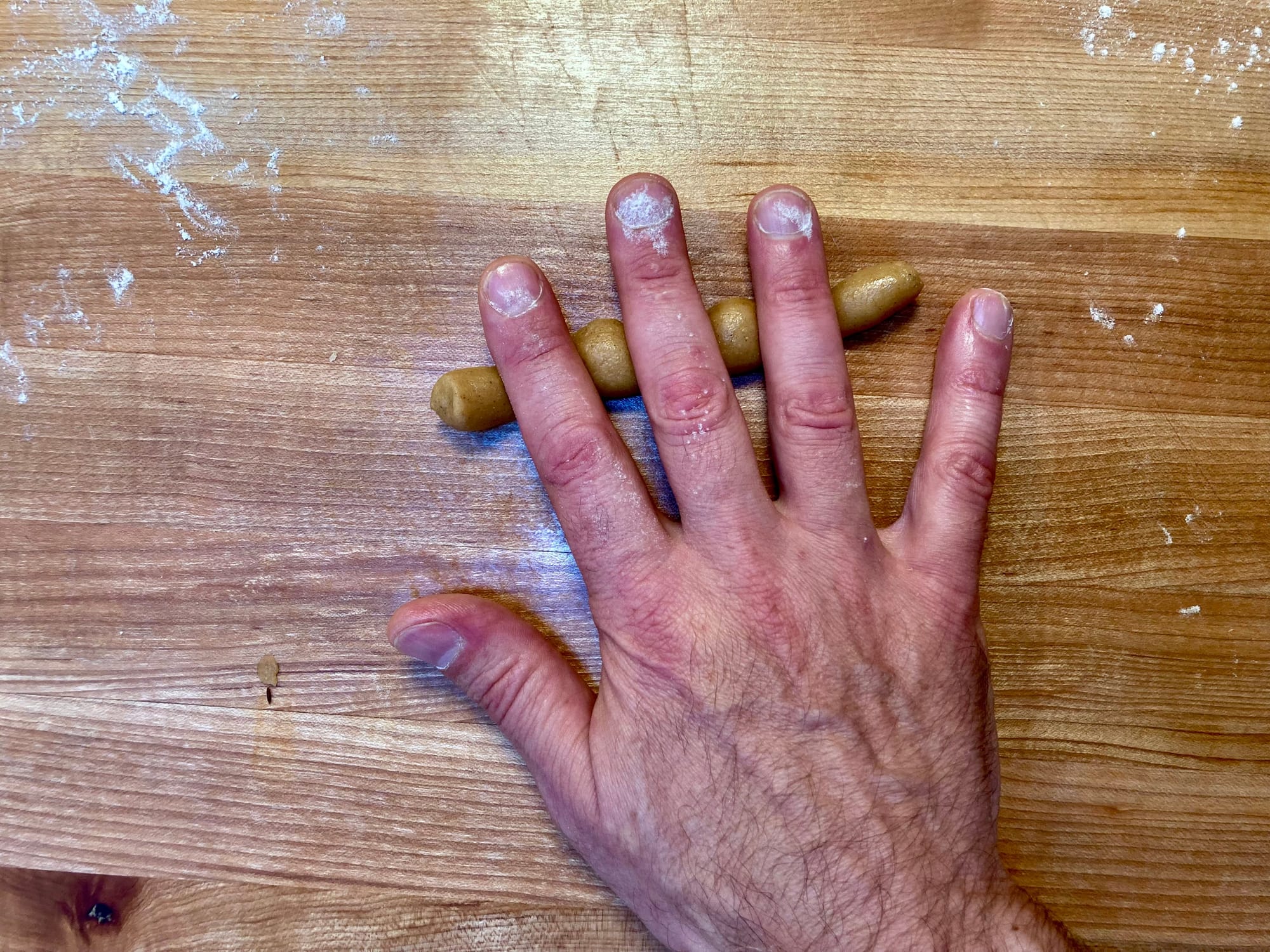
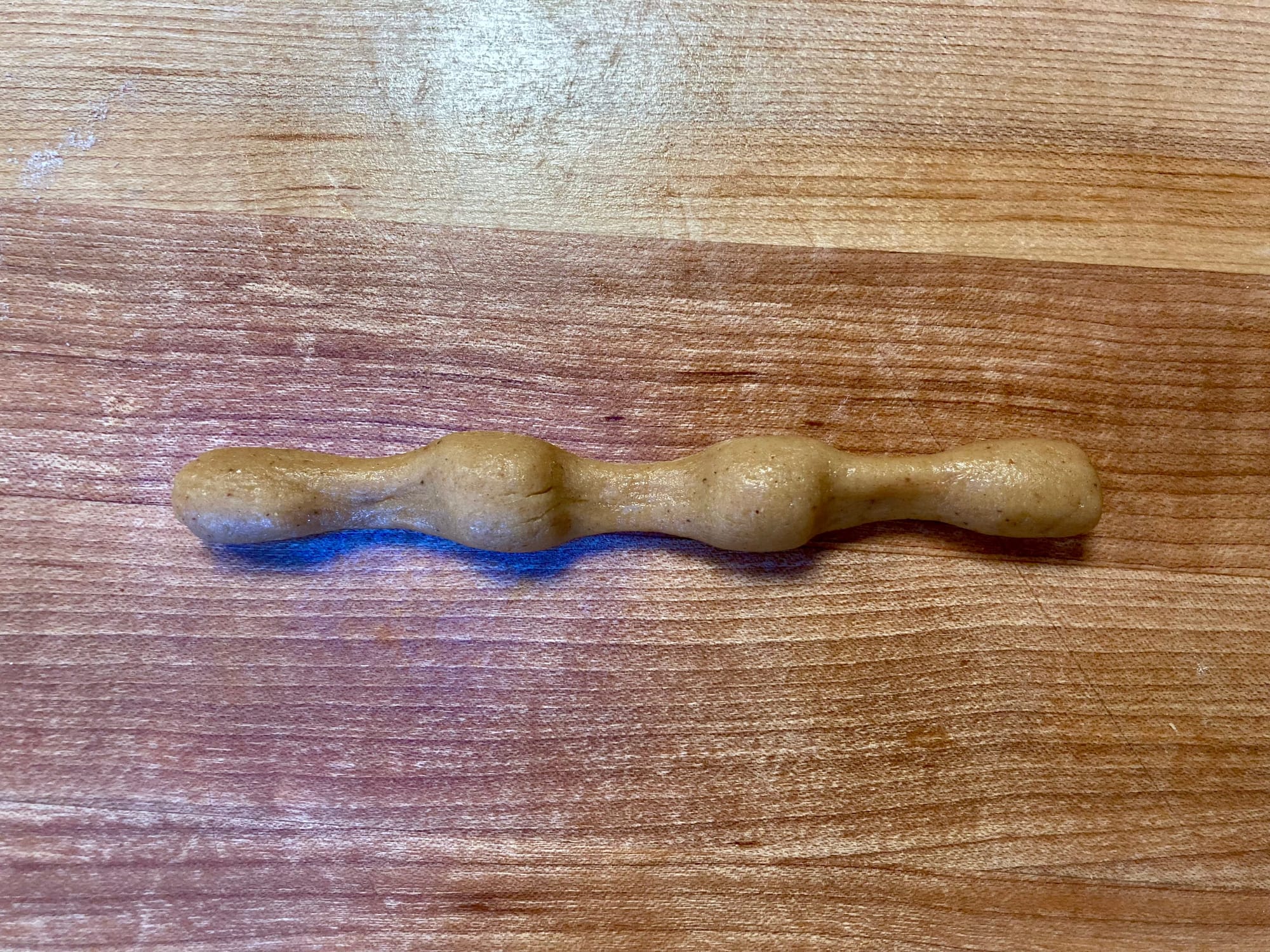

wordloaf Newsletter
Join the newsletter to receive the latest updates in your inbox.




